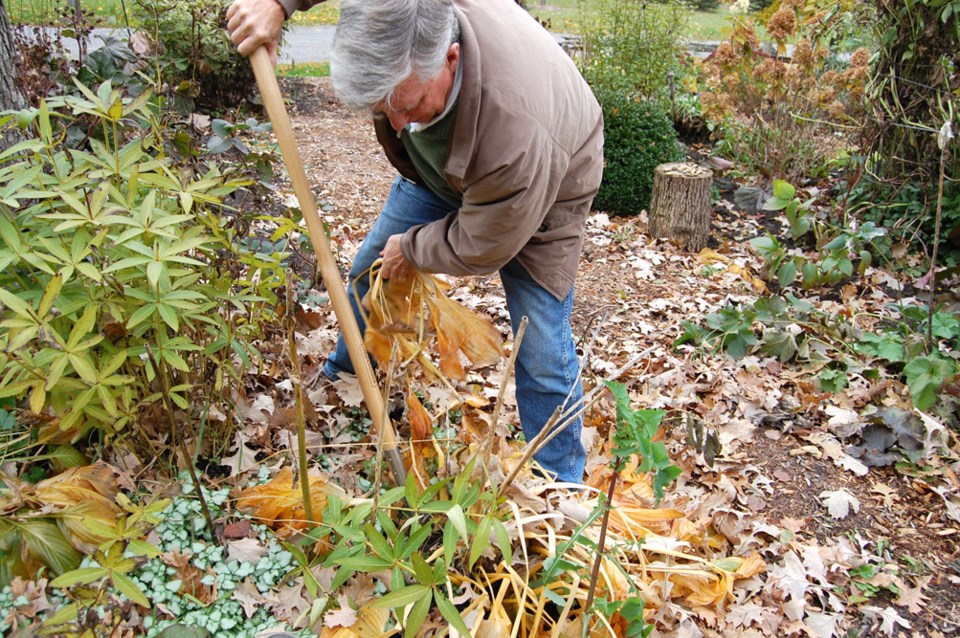Mid-October is an interesting time of year in the Canadian garden.
Experienced gardeners take advantage of the cooler temperatures, moisture in the soil and perennial plants that are slipping into dormancy which are ready to divide and multiply next spring.
Beginner gardeners are knocking the dirt off their knees and cutting the grass “one more time” before they pack it in.
We are here to suggest that there is still more fun to be had in the garden. Here is how:
- Spring flowering bulbs.You plant brown, dormant bulbs now and create a show of colour next spring. Simple. Right now, the selection of Dutch flowering bulbs is at its best. The longer you wait, the lower the selection. The fact is, there is one boat that comes from the Netherlands each fall to Canada. That’s it, so get your bulbs soon. Besides, the sooner that you plant them, the better performance come spring.
- Dig and Divide.The mature Hosta in your front yard is in a giving mood right now. Yes, plants have moods. All mature perennials with a fleshy root can be dug up, divided and re-planted around your yard. Or you can give the divisions away to friends and neighbours. We recommend that you use a sharp flat-bladed spade or a dividing knife. Dig up the whole Hosta or a large portion of root from your monarda, Shasta daisy or echinacea, etc. Split the root in half, and half again. If it is especially big, you can split it one more time, to create up to eight healthy plants from the mother plant. Save money and populate your garden, or gardens in your community.
- Prune.This is the best time of year to prune a cedar hedge. All evergreens lend themselves to fall pruning: junipers, boxwood, yews, spruce or pine. Prune fall flowering shrubs, like a Rose of Sharon, now. Leave hydrangea until spring.
- Lawn fertilizing. You have heard us say it before: the most important application of fertilizer for your lawn is now, in the second half of fall. Quality lawn food, like CIL 12-0-8, helps grass roots build up natural sugars in the root zone, reducing the chance of snow mold and increasing your lawn’s ability to bounce back in spring.
- Leaves.Rake leaves off your lawn and onto your garden, covering the surface of the soil up to 12 cm thick when dry and 4 cm when wet. By late spring, earthworms will have pulled them down into the soil and improved soil composition by converting the leaves into nitrogen-rich earth worm castings. If you have an excess of fallen leaves, run your lawn mower over them while they are on your lawn, with the wheels set as high as they will go. Many leaves will mulch right into your lawn. If you have a quantity of leaves you can rake up the mulched leaves onto your garden. We recommend that you mulch oak leaves to help them breakdown quickly.
If you have more leaves than you can use in your garden, add them to your compost and offer them to neighbours who can use this free soil-conditioner/fertilizer.
- Harvest.Be sure to harvest all fruits and vegetables as they ripen. Our short days and cool nights can induce disease, so it is incumbent upon you to keep on top of your harvest. Feed the spent plants to your compost bin.
- Tropical plants.If you haven’t brought your tropical plants indoors yet, be sure to do it this weekend. We recommend this be done in September, however, better late than never! Place your topical plants in a sunny window for the winter and apply insecticidal soap if insect problems occur.
Finally, leave your “winterizing jobs” until November. It is too early to wrap evergreens in burlap, hill up roses and apply rodent repellant to fruit trees. More on that later.
Mark Cullen is an expert gardener, author, broadcaster, tree advocate and Member of the Order of Canada. His son Ben is a fourth-generation urban gardener and graduate of University of Guelph and Dalhousie University in Halifax. Follow them at markcullen.com, @markcullengardening, on Facebook and bi-weekly on Global TV’s National Morning Show.



